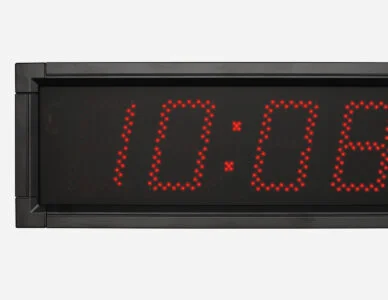The differences between PoE and PoE+

What is PoE?
Power over Ethernet (PoE) is a technology that makes it possible to transmit both data and electrical energy via the same twisted-pair Ethernet cable. This technology is used to supply end devices such as wireless access points, IP cameras and VoIP telephones. The special thing about PoE is that it requires only one RJ45 cable to deliver both data and power to these devices, eliminating the need for separate power cables for each device.
Differences between PoE and PoE+
The main difference between PoE and PoE+ is the amount of electrical power they can deliver over an Ethernet cable.
- Power output: PoE according to the IEEE 802.3af standard can supply up to 15.4 watts per port. PoE+ according to the IEEE 802.3at standard can deliver up to 30 watts per port.
A simple example of the power output:
A standard surveillance camera powered by PoE requires less energy and can therefore be supplied with up to 15.4 watts per port. This is enough to support basic functions such as video recording or simple motion detection. In contrast, a more advanced surveillance camera that offers additional features such as HD video, motorised pan-tilt-zoom controls and integrated outdoor heating elements will require more power. This camera benefits from a PoE+ enabled network that can deliver up to 30 watts per port. This additional power allows the camera to operate all of its advanced features without the need for a separate power supply.
Our clocks also feature PoE+. Below a small selection from our portfolio.
The power output is not the only difference between PoE and PoE+
- Compatibility: PoE+ is backwards compatible, i.e. you can operate PoE devices on a PoE+ switch, but not vice versa (PoE+ devices require a PoE+ switch).
- Energy efficiency: PoE+ has mechanisms for better energy management and can better recognise and adapt the energy requirements of a connected device.
- Cable length and quality: Both standards generally support a cable length of up to 100 metres, but PoE+ can be more sensitive to the quality of the cable due to the higher power output.
- Areas of application: PoE is often used for simple network devices such as VoIP telephones or simple surveillance cameras. PoE+ is used for more demanding applications and devices that require more power, such as advanced surveillance cameras or point-of-sale systems.
- Cost: PoE+ switches and devices are generally more expensive than their PoE counterparts as they offer more power and have more complex energy management functions.
FAQs about PoE
The technology has numerous advantages. Firstly, it eliminates the need for AC/DC adapters and sockets to power Powered Devices (PDs), as both data and power are transmitted via a conventional Ethernet cable. This reduces installation costs for new PD devices as no professional electrician is required to run power lines if the desired installation location does not already have power. In addition, standard Ethernet cables are inexpensive and often already available on site. Secondly, PoE reduces the number of potential sources of error. Connecting PoE switches or injectors to an uninterruptible power supply (UPS) ensures a continuous power supply for PoE-powered devices, which is particularly important for critical PoE edge devices. Thirdly, PoE installations with managed switches enable remote rebooting of PoE devices, whether manually, automatically or on a set schedule. Modern PoE switches are equipped with a watchdog function, also known as Powered Device Manager (PDM). This function interrupts the power supply to offline devices and then restores it to enable a restart, significantly reducing the downtime of connected devices.

